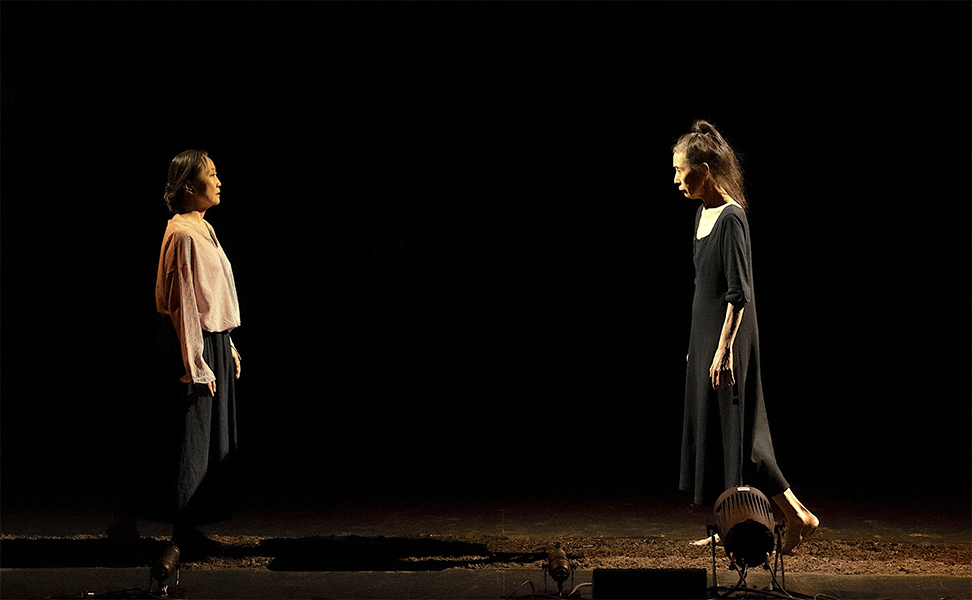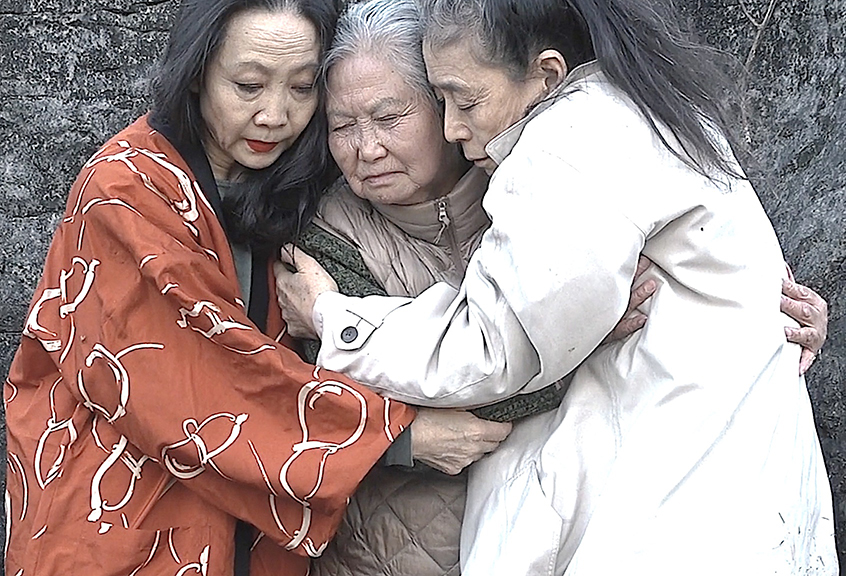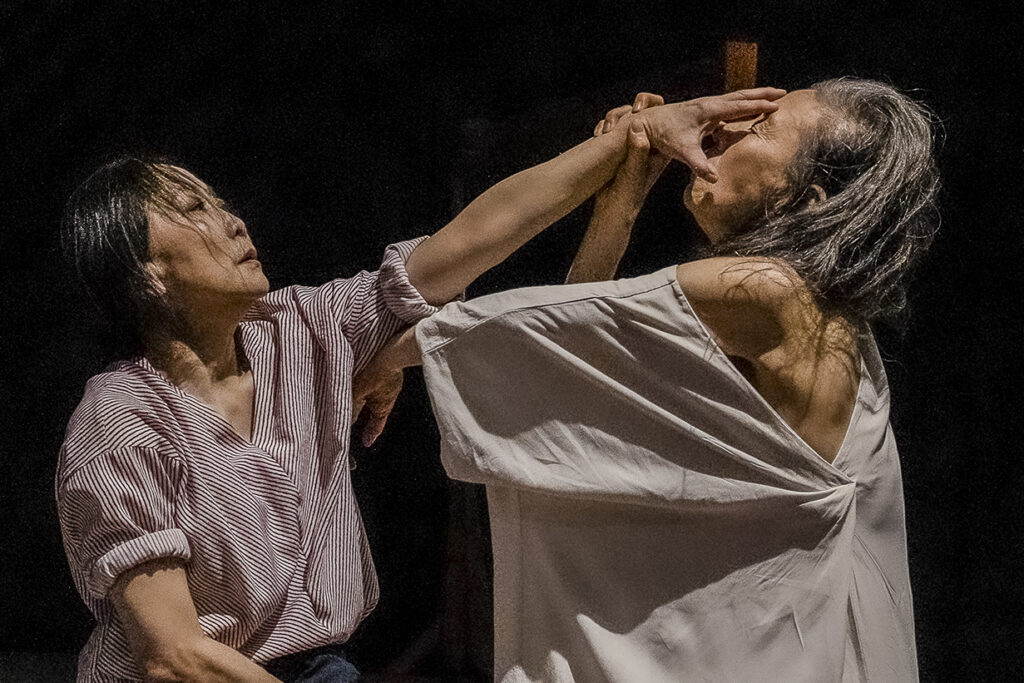By Andrew Hamlin
NORTHWEST ASIAN WEEKLY

Eiko Otake and Wen Hui (Photo by Jason Williams)
The Japanese and Chinese people share a violent past, and a long history of interwarring. Chinese dancer Wen Hui and Japanese dancer Eiko Otake decided to express this complex and turbulent history through their collaborative choreography.
“Of course, our discussion cannot be separated from our personal family histories, which are etched into our very bodies,” said Wen Hui, who co-presents “What Is War” with Eiko Otake at On the Boards, which started on Oct. 9. “What Eiko and I share on stage are our own true stories.”
According to Otake, “we traveled to Nanjing and visited the Nanjing Massacre Museum.” They also visited a house used by “comfort women,” females forced into sexual slavery by conquering Japanese armies during World War II.
Of course, their respective cultures, and governments, played a strong part in their histories.
“My profession was not my own choice,” remembered Wen Hui. “In 1968, Mao Zedong called on educated youth to go to the countryside for re-education by the poor peasants and lower-middle peasants. In early 1970s China, young people could avoid rural labor only by studying art or sports, joining the military, or having a physical disability. Thus, my parents sent my brother and me to study art.”
Eiko Otake grew up in Japan, with more choices. She studied dance after a stretch as a highly political young woman. “But the anti-Vietnam War student movement shifted toward more revolution-seeking, which became aggressive and violent. So I left the political front and wanted to seek my own identity.”

Wen Hui and her mother with Eiko
Their friendship goes back 30 years. “I first met Eiko in 1995 at the inaugural Guangdong Small Theater Arts Festival in China,” said Wen Hui.
I remember after watching our performance, Eiko and [her partner] Koma approached us at the theater entrance. They told us it was excellent, offering very positive affirmation of our work. I was quite surprised, as Chinese audiences at that time weren’t ready to accept such unconventional pieces. The next day, we had a long discussion at the festival office. Whenever I performed in New York, Eiko would attend and invite me to her home.”
“What Is War” began with each performer spending time at the other’s home, through a grant by the ACC (Asian Cultural Council). The pandemic cut those plans short, but they developed the dance through Zoom calls and editing video footage of the work they completed pre-pandemic. They premiered the piece last April at the Walker Arts Center in Minneapolis, Minnesota, followed by visits to UCLA, Duke University, and Colorado College.

Photo by Zhou Huiyin
And the piece, its creators affirm, keeps growing and changing.
“We are not comfortable to say ‘finished,’” stressed Otake, “especially because so many wars and violence go on in the world. We do not live in the same country, so when we get together for a length of time, we need to reconsider some elements.”
Or as Wen Hui phrases it, “the world has been changing at a frantic pace, growing increasingly chaotic. We cannot clearly see the future, and [our] artworks, of course, are constantly evolving.”
After their On the Boards run, explained Otake, the pair will take their dance to the Brooklyn Academy of Music (BAM), for the Next Wave 2025 festival showcasing innovation in the arts. They’ll travel to Frankfurt, Germany, where Wen Hui now lives, to plan further work, including a documentary about “What Is War.”
And as for Wen Hui, her mission statement is simple. “Continue to create.”
“What Is War” plays Oct. 9-11 at On the Boards, 100 West Roy Street in Seattle. A special free screening of “No Rule is Our Rule,” Wen Hui and Eiko Otake’s video diaries preparing for the piece, plays Oct. 11. For ticket prices, showtimes, and more information, visit https://ontheboards.org.

